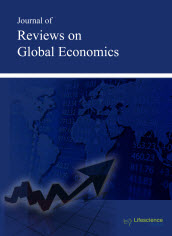jrge
Abstract : Innovations in Risk Management as Exemplified by the Polish Insurance Market
|
|
Abstract: : The era of knowledge based economy, which the world is dynamically entering, reveals many new factors and necessities which a modern company needs to consider and cope with if it wishes to stay on in business. The innovativeness of business activity, in a broad meaning of the word, is an area of significant factors. Holistically, one may ask about the borders of innovation applied in business. Are they determined by: the actual needs of end consumers and as a consequence the needs of companies participating in the chain of value delivered to these customers or primarily the actual needs to earn on corporate investments on the customer value chain? This paper analyses the problem of management of innovation programmes and projects introduced by companies from the microeconomic perspective. Its main aim is to show a new approach to innovation cost management and the innovation activity of the insurance sector in Poland. The paper consists of two sections. The first one describes innovation cost management. Innovative companies should be supported by the insurance sector. They should also apply knowledge and appropriately analyse and allocate costs within the algorithms of behaviour compliant with the risk management. The second section analyses the Polish insurance sector with the Multivariate Statistical Analysis. The paper ends with the conclusions with regard to the insurance sector. The examination of the sector shows that the insurance market in Poland in the analysed period was not innovative and it did not create innovation supporting services (and it is where the insurance risk appears due to the financial aspects of innovation). Keywords: Innovation, cost management, risk management insurance.Download Full Article |
Abstract : The Effect of Inflation on Domestic Migrant Worker Households in China
|
|
Abstract: Domestic migration workers and inflation are two phenomena attracting attention from worldwide scholars. The article endeavors to accomplish the following three tasks: a) describe the characteristics of inflation and immigration situations in China; b) study the effect of inflation on domestic immigrants’ the expenditures; c) understand the effect of inflation on immigrants’ happiness and satisfaction. The paper found out that in all the eight expenditure categories, only three categories (food, clothing and housing) are negatively affected by inflation. Other five expenditure categories (health and medical, house equipment, facilities and services, entertainment, educational and cultural activities, transportation and communication, tuition, and miscellaneous) are positively affected by inflation. The biggest reduction of expenditure is in transportation and communication with a coefficient of -0.025. The paper also found out that the lower income group’s expenditure is more affected by inflation then higher income group. The paper showed that inflation didn’t have a significant effect on people’s feeling of happiness and their satisfaction. Keywords: Domestic immigration workers,inflation, expenditure, happiness, satisfaction.Download Full Article |
Abstract : The impacts of International Financial Crisis on Saudi Arabia Economy: Evidence from Asymmetric SVAR modelling
|
|
Abstract: This paper aims to measure the impacts of International Financial Crisis on the performance of the Saudi Arabian economy from 1968 to 2010. Linear and non-linear SVAR methodologies are used to exhibit the interdependence between the process of international liquidity, net-exports and economic growth. The empirical models show that the impacts of international financial crisis lead to an immediate drop in the net-exports and conduct to reduce gradually real economic growth during roughly three years. In the horizon, the variation in economic growth is largely attributed to domestic supply shocks, but negative shocks of international financial markets drove to reduce the economic growth in the long-run by 1.04%. Keywords: Financial Crisis, International Liquidity, Asymmetric SVAR Model, Saudi Arabia.Download Full Article |
Abstract : Fighting for Rents: Agricultural Windfall Gains and Social Change in Land-Abundant Developing Countries
|
|
Abstract: In recent years, a global increase in demand for agricultural commodities and land has contributed to increasing agricultural prices. This trend can be expected to continue in the future, and may result in significantly higher land rents. This paper investigates the potential distributional effects of increasing land rents in land-abundant developing countries from a theoretical viewpoint, and provides historical case examples to support the theoretical propositions. It is proposed that the specific characteristics of a rent-generating natural resource have implications for the concentration of economic and political power and hence the distribution of rents. Specifically, when it comes to agricultural land, the characteristics of land imply that the organizational capacity of farmers is a crucial determinant of the distribution of agricultural rents. The historical case examples indicate that the extent of organizational capacity may be determined by land inequality, the heterogeneity of farmers and the political environment. Keywords: Rent seeking, agricultural windfall gains, developing countries, land grab, natural resources.Download Full Article |























